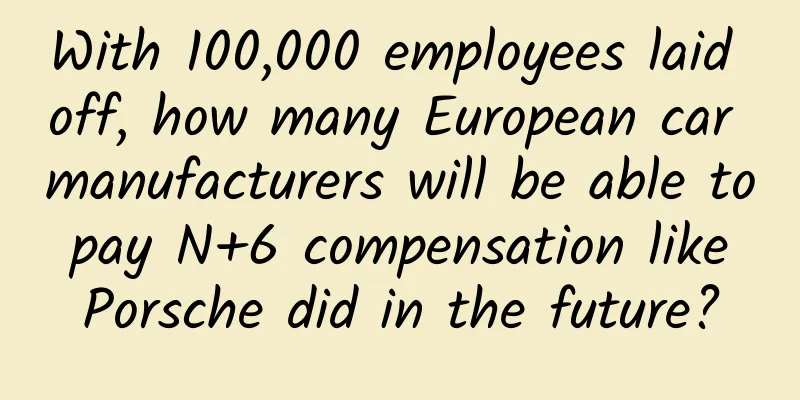Apple's reduction in supply of high-end models means an opportunity for domestic brands to enter the high-end market?

|
Due to the global supply crisis of semiconductors and other products, Apple is facing an unprecedented shortage of products. Some versions of the iPhone 13 models may have to wait for more than half a month before they are available.
This situation may be getting better. According to reports, Zhengzhou Foxconn has stepped up its recruitment in the off-season to meet the market demand during the New Year peak season and prepare for the upcoming return of migrant workers. Industry insiders said that behind Foxconn's abnormal operation is actually a signal from Apple that it requires the supply chain to re-accelerate the production of iPhones. In addition to the chip shortage, due to factors such as power restrictions, cost increases, and fluctuations in customer production plans, iPhone and iPad-related assembly factories were briefly shut down in October this year. The supply of mobile phones such as the iPhone 13 has decreased compared with previous years, and delivery time has also been lengthened. A reporter from China Business News also recently visited Shanghai Changshuo, known as Apple's second largest mobile phone OEM factory, as well as operators, communications service companies, etc., and learned that iPhone 13 and 13 mini are in sufficient stock, while iPhone 13 Pro and Pro Max, as mid-to-high-end models, are in serious shortage. Some operators' iPhone 13 Pro Max shipments are nearly 50% less than last year's iPhone 12Pro Max. However, supply chain issues have not affected Apple's stock price, which is now worth nearly $3 trillion. At the same time, analysts expect Apple to usher in a record holiday sales season, with sales in the last three months of the year expected to increase by 6% to $117.9 billion. iPhone 13 Pro Max supply is 47% lessUnlike Foxconn Zhengzhou, which rarely recruits workers in the off-season, Shanghai Changshuo, the second largest Apple phone OEM, has not made much difference in its recruitment efforts compared to previous years. "We send people to the factory every day, but now is not the time to get a high rebate." An agent from a labor service company near Shanghai Changshuo said that the current recruitment policy is to give a rebate of 7,000 yuan for a cumulative 90 days of employment, and the rebate will be higher if you come after the New Year. In comparison, the rebate offered by Foxconn in Zhengzhou has reached 9,500 yuan. The so-called rebate means that applicants can get an additional bonus in addition to their normal salary on the basis of meeting the requirements of working and clocking in for a certain number of days. The amount of the rebate can usually be used to infer the size and urgency of the Apple orders received by the foundry. Generally speaking, Shanghai Changshuo's rebate reaches its highest point of the year in August every year, because that is when the new iPhone is in mass production. The reporter learned that the reason why Shanghai Changshuo did not recruit workers this winter like Foxconn in Zhengzhou during the off-season is because Shanghai Changshuo mostly undertakes orders for low-end iPhone models, such as iPhone 13 and 13 mini. On Apple's official website, the reporter noticed that iPhone 13 and 13 mini are in sufficient stock and can be picked up at the retail store on the same day or delivered the next day after placing an order. However, the high-end models of iPhone 13 Pro and 13 Pro Max are out of stock in retail stores and orders must be placed until the end of December for delivery. The reporter learned from a person from a Shanghai operator that, overall, the iPhone 13 series products their company received through all channels were less than last year's iPhone 12 series. "For example, the iPhone 13 Pro Max shipments are 47% less than last year's iPhone 12 Pro Max, and the iPhone 13 is 13% less," the operator said. "There are not many high-end iPhone 13 models, and they have been out of stock. It's hard to say for different versions. We basically have goods arriving every 1 to 2 days, but the goods that arrive may not be the version you ordered." A purchasing staff member of Jiangsu Communication Service Company also told reporters that the current supply of iPhone 13 series models with storage capacity of 512GB and 1TB is still less than other versions. However, the aforementioned Shanghai operator said that the supply of mobile phones is also controlled by the market. The absence of goods does not necessarily mean that there is really no stock. When the market price becomes high, the goods are likely to be taken away by the channel. Wang Changwen, dean of Changwen Business School, who has been deeply involved in the mobile phone channel for decades, pointed out that the hot sales of the iPhone 13 series are not only due to lower pricing than before, but also to market channel control. According to him, iPhone national agents now require the next-level dealers to pay a deposit of at least 50,000 yuan for the goods. Due to the sharp decline in iPhone sales, the gross profit margin of iPhone dealers has increased by nearly 50% year-on-year, and the market enthusiasm is high. "In the past, there was no bargaining in the market for iPhone X and iPhone 11, but now there is still bargaining profit for high-end models such as iPhone 13 Pro Max," said Wang Changwen. Chip supply may reach balance around Spring FestivalThe reduced supply and longer delivery time of iPhone 13 are generally believed by the market to be related to the global chip shortage. As early as July this year, Apple stated that the chip shortage had affected the iPhone and iPad production lines. Its CEO Cook bluntly stated in the latest quarterly earnings conference call that the chip shortage had a greater impact on Apple's fourth-quarter performance than expected, with an estimated revenue reduction of US$6 billion. Cook further pointed out that although the production of Apple's Southeast Asian factories had improved significantly by the end of October, the "chip shortage" has not ended and is affecting most of Apple's products. What Apple is short of is not advanced process chips, but traditional process node components such as power management chips. In the view of Sun Yanbiao, chairman of Xuri Big Data, the chip shortage is caused by the Sino-US trade friction. In order to avoid future market risks, Huawei began to reserve three years of chip inventory as early as 2019, which led to Xiaomi, OPPO and vivo following suit and stocking up chips on a large scale. The large-scale stocking of chips by mainstream mobile phone brand manufacturers eventually triggered large-scale stocking of chip speculators, mainly in Shenzhen Huaqiangbei. He also pointed out that upstream chip suppliers, mainly TSMC, have been increasing their production capacity since the second half of 2020. On the contrary, the smartphone market, a major consumer of chips, performed weakly in 2021. From this perspective, it seems a bit unreasonable that the market is still "short of chips". "The current chip shortage is partly due to chip hoarders protecting the market. Reliable sources show that some chip hoarders in Shenzhen's Huaqiangbei have gone bankrupt as a result." Sun Yanbiao predicts that the chip supply will balance around the Spring Festival in 2022. According to the list of major suppliers released by Apple in June this year, there were 42 suppliers in mainland China in 2020, including A-share listed companies such as GigaDevice, Derun Electronics, Changying Precision, Shengli Precision, and Tianma Microelectronics. However, affected by factors such as chip shortages, the epidemic, power restrictions, and fluctuations in customer production plans, the performance of companies in Apple's industrial chain has been hit to varying degrees. For example, Lens Technology's net profit in the third quarter of this year fell 34.97% year-on-year, Derun Electronics began to incur losses, and the net profits of companies such as Xinwei Communication, Jinfu Technology, and Shengli Precision also declined in the third quarter. Can domestic brands rise in the high-end market?Amid the ongoing chip shortage, can Apple's supply chain capacity keep up with market demand? In this regard, Wang Xi, an analyst at market research firm IDC, believes that Apple has always had almost the highest priority and voice in the global supply chain, and its supply chain capacity is currently able to keep up with market demand, because in the overall domestic market, the various versions of the iPhone 13 series have not yet shown obvious supply shortages or shortages and premiums. Sun Yanbiao said that although the 5G replacement wave has arrived as expected, the mobile phone market in 2021 can be said to be lively but not prosperous. "According to existing data, the total sales volume of the Chinese smartphone market in 2021 will be around 300 million units, while the total sales volume of the global smartphone market will not exceed 1.1 billion units," he said. Sun Yanbiao further pointed out that the sales of the world's top 20 best-selling mobile phones in the third quarter of this year seem to be mainly concentrated in the low-end and mid-end markets, but in fact the high-end mobile phone market above $600 continues to expand, accounting for 32%. This is also an important reason why Xiaomi, OPPO, vivo and Honor are focusing on the high-end mobile phone market. He predicts that the sales share of high-end mobile phones above $600 will exceed 40% in the fourth quarter of this year. However, in the high-end mobile phone market, without the resistance of Huawei, Apple has become more powerful in the Chinese market. "In October last year, iPhone sales in China were 5.57 million units, with a market share of 21.3%; in October this year, iPhone sales in China were 10.44 million units, a year-on-year increase of 88%, and the market share increased to 31.1%." Sun Yanbiao said. Considering the slowdown in iPhone demand, there will definitely be a wave of Android flagship phones equipped with a new generation of Snapdragon mobile platforms released next year. Can domestic mobile phone brands such as Xiaomi, OPPO, and vivo gain a foothold in the high-end market? In this regard, Wang Xi is not very optimistic about the current Android camp's path to impact the high-end market. "The main models of most Android flagships have little overlap with the current price of iPhone 13 of more than 5,500 yuan, and they are not competing in the same price range." |
Recommend
How to leverage Moments ads to attract new users?
This article takes a decoration company as an exa...
In-depth study of Android Dalvik's Dex file format
Case Studies In this case study, we will examine ...
WeChat Youth Mode has been upgraded! The first guardian authorization function is launched
[[428163]] Do you want to flexibly set the conten...
3 steps: How to construct a product user model?
A model refers to a formal expression of a practi...
This year’s Mid-Autumn Festival mooncake collection is here, I give this wave of leverage 101 points!
The annual mooncake war has begun again Cuteness,...
You can’t tear it off, and you can’t eat it. What are the stickers on fruits used for?
Many people are used to peeling the stickers off ...
When marketing becomes a money-making machine
Marketing has always been considered a costly thi...
9.69 million RMB! A collectible Apple 1 computer for sale, which Jobs helped make 45 years ago
This article is reproduced from Leiphone.com. If ...
Before the end of the year, remember to go to the Apple Store to replace your iPhone's battery
Affected by last year's iPhone throttling sca...
Maximizing IP value from the acquisition of the copyright of the popular comic "Dragon Sakura" by Alibaba
There have been rumors of Alibaba's involveme...
Why can’t a girl unscrew the cap of a bottle but can unscrew the top of her boyfriend’s head?
【appendix】 1. When a factory produces bottled bev...
The childhood snack "shredded figs" has nothing to do with figs?
I believe that for those born in the 1980s, the l...
How much do you know about product conversion: 4 analysis models for high conversion
What is conversion Conversion includes two things...
2020, top ten marketing keywords!
Affected by the overall environment this year, al...
People's Daily published an article on new energy vehicle subsidy fraud: The hole must be plugged
Since 2009, the central government has provided s...









